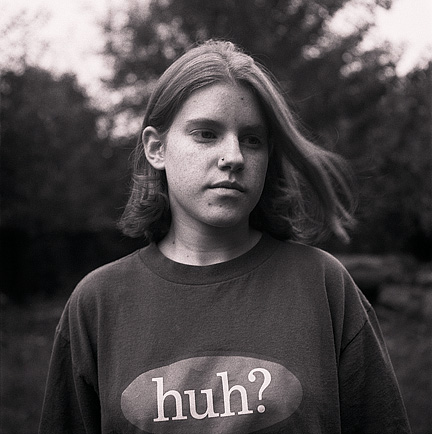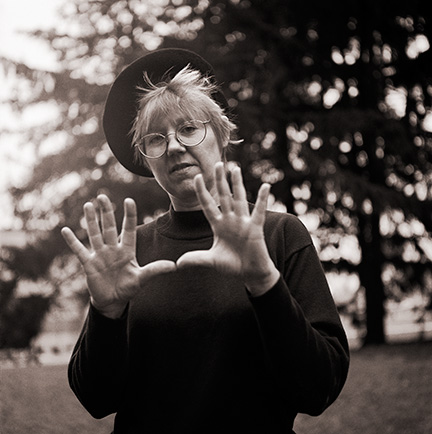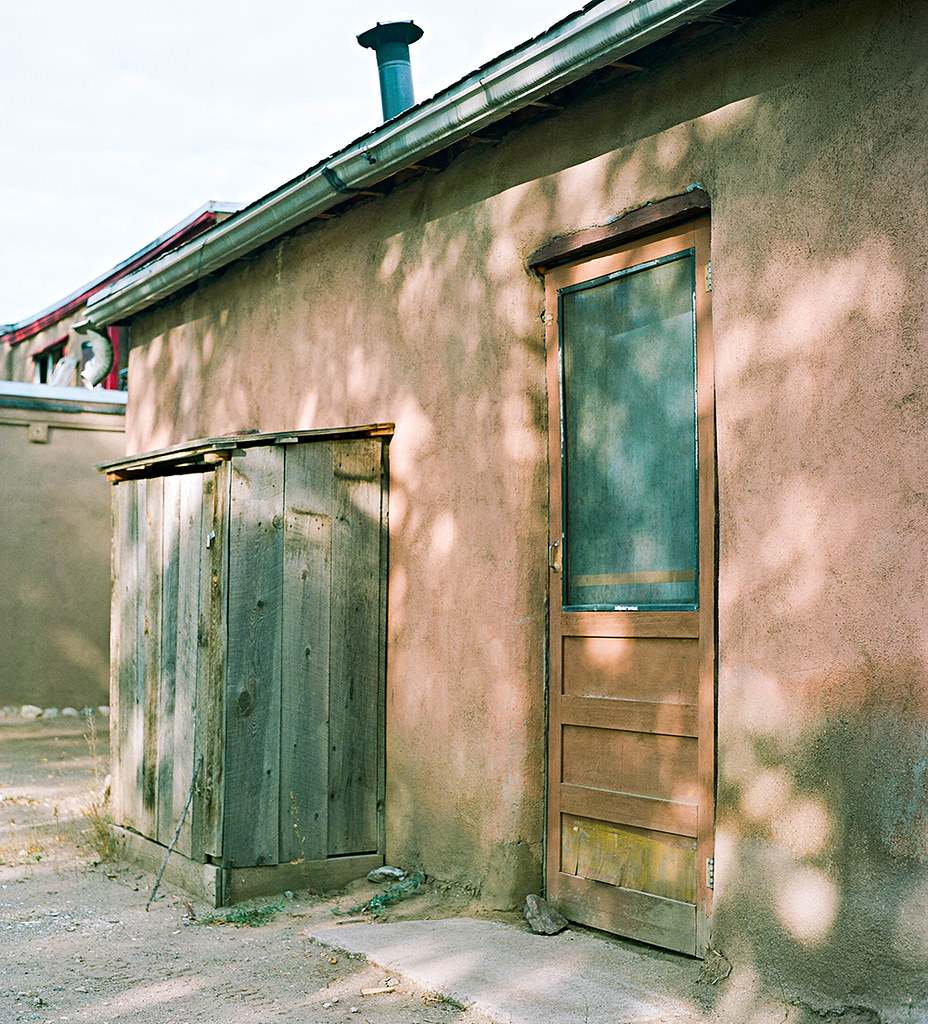retinax
Well-known
Hello all,
I'm wondering how they compare in terms or sharpness at stopped down apertures. To be specific, I'm wondering if I should use my Tessar equipped TLRs for a project, or borrow an SL66 w/ Planar. It will be used mostly on a tripod, stopped down. Maybe people here have already done the testing and I can rule out one of the options without having to do my own.
I know that Tessars, or other 4 or even 3 element lenses, can be very sharp in the center even wide open, but get weaker toward the corners. Of course this evens out a great deal when stopped down. But how much exactly? Of course there are big differences between individual lenses, and sharpness isn't everything and so on, but I'm sure there are some things to be said about the capabilities of these lens types in general. I'm thinking about decent sized wet prints here, maybe up to 15x15" (although I will certainly make only smaller prints of most negatives), and I have good eyesight, so low resolution scan comparisons won't cut it. Thanks!
Please do also post if you have made comparisons between other normal lens types under these parameters (well stopped down, we all know about huge differences wide open), it's interesting even if it isn't of practical relevance for my project.
I'm wondering how they compare in terms or sharpness at stopped down apertures. To be specific, I'm wondering if I should use my Tessar equipped TLRs for a project, or borrow an SL66 w/ Planar. It will be used mostly on a tripod, stopped down. Maybe people here have already done the testing and I can rule out one of the options without having to do my own.
I know that Tessars, or other 4 or even 3 element lenses, can be very sharp in the center even wide open, but get weaker toward the corners. Of course this evens out a great deal when stopped down. But how much exactly? Of course there are big differences between individual lenses, and sharpness isn't everything and so on, but I'm sure there are some things to be said about the capabilities of these lens types in general. I'm thinking about decent sized wet prints here, maybe up to 15x15" (although I will certainly make only smaller prints of most negatives), and I have good eyesight, so low resolution scan comparisons won't cut it. Thanks!
Please do also post if you have made comparisons between other normal lens types under these parameters (well stopped down, we all know about huge differences wide open), it's interesting even if it isn't of practical relevance for my project.
Chriscrawfordphoto
Real Men Shoot Film.
I have not done a direct comparison with medium format cameras, but I have an ancient Rolleiflex Automat Type 1 with an uncoated Tessar and it is very sharp all the way to the corners stopped down.
Yesterday, I actually did do a direct comparison between two 50mm tessar-type lenses; a Leica 50mm f2.8 Elmar and a Canon 50mm f1.8, both Leica screwmount lenses on a Leica IIIf. I shot the same scenes with both at the same apertures too compare them.
I can't tell you which is best yet, I haven't developed the film yet. I have used both lenses a lot and I don't expect a significant difference.
Yesterday, I actually did do a direct comparison between two 50mm tessar-type lenses; a Leica 50mm f2.8 Elmar and a Canon 50mm f1.8, both Leica screwmount lenses on a Leica IIIf. I shot the same scenes with both at the same apertures too compare them.
I can't tell you which is best yet, I haven't developed the film yet. I have used both lenses a lot and I don't expect a significant difference.
Dan Daniel
Well-known
I won't go into optics or technical testing. From the project you describe, the major criteria I would use is 'feel.' The Tessar and the Planar both produce technically capable and competent results at the print size and apertures (f/8-11?).
The Planar has more of that elusive thing often called 'micro-contrast.' The Tessar is 'smoother' in tonality. See.... this is where it gets weird and woolly and won't show up on resolution tests.
Given the dominance of the Planar in post-WWII photography- on both Rolleiflexes and on Hasselblads- its 'look' is more 'professional.' Geez, can't avoid this language, eh?
I would go to Flickr, do searches for both lenses, study them, make a decision, and get on with your project. Either lens will give you technically fine negatives.
I'd be more concerned with the difference between a TLR and an SLR for the project. If you find you like the Planar but prefer a TLR, get a Rolleiflex with a Planar.
The Planar has more of that elusive thing often called 'micro-contrast.' The Tessar is 'smoother' in tonality. See.... this is where it gets weird and woolly and won't show up on resolution tests.
Given the dominance of the Planar in post-WWII photography- on both Rolleiflexes and on Hasselblads- its 'look' is more 'professional.' Geez, can't avoid this language, eh?
I would go to Flickr, do searches for both lenses, study them, make a decision, and get on with your project. Either lens will give you technically fine negatives.
I'd be more concerned with the difference between a TLR and an SLR for the project. If you find you like the Planar but prefer a TLR, get a Rolleiflex with a Planar.
Dan Daniel
Well-known
Which Canon LTM 50mm f/1.8 is a Tessar-design? I thought they were all Gauss or variations? Maybe 5 element?Yesterday, I actually did do a direct comparison between two 50mm tessar-type lenses; a Leica 50mm f2.8 Elmar and a Canon 50mm f1.8, both Leica screwmount lenses on a Leica IIIf.
Chriscrawfordphoto
Real Men Shoot Film.
Which Canon LTM 50mm f/1.8 is a Tessar-design? I thought they were all Gauss or variations? Maybe 5 element?
None are, I mistyped. The canon is a planar type lens and the Elmar is a Tessar type. :bang:
benlees
Well-known
I've done some testing between a Rolleicord v and a Mamiya 7 80mm- which I think is a planar (it is 6 element symmetrical design).
Rollei had scratches on the front element. The tests were done at f8. I made 4x6 b&w sample prints of what would have been 22" prints. The Mamiya had a bit more contrast; that's it. Tessars hold their own. I sold the Mamiya not long after and I returned the Rollei due to those scratches. Hell of a fun afternoon!
Rollei had scratches on the front element. The tests were done at f8. I made 4x6 b&w sample prints of what would have been 22" prints. The Mamiya had a bit more contrast; that's it. Tessars hold their own. I sold the Mamiya not long after and I returned the Rollei due to those scratches. Hell of a fun afternoon!
Dan Daniel
Well-known
By the way, if you want to crunch numbers-
https://web.hevanet.com/cperez/MF_testing.html
Remember that when you are dealing with older lenses, sample variation is a real issue. Optical grinding machines were not as precise and consistent as they are today. Also camera condition is important, with TLRs allowing for more ways for a lens get misaligned or not focus the same as the viewing system.
https://web.hevanet.com/cperez/MF_testing.html
Remember that when you are dealing with older lenses, sample variation is a real issue. Optical grinding machines were not as precise and consistent as they are today. Also camera condition is important, with TLRs allowing for more ways for a lens get misaligned or not focus the same as the viewing system.
Deardorff38
Mentor
Retinax, you don't mention the nature of your project. I've owned several Rolleiflex 2.8f in the past & think they're lovely cameras. (I traded off the last one for a 90mm Super Angulon XL). A number of years ago I got a Rolleiflex T off Ebay with supposed lens separation which i've never seen. I had Harry Fleenor work his magic and put a Maxwell screen in it. It grew on me, the more I used it. Here's an image, stopped down and on a tripod w Ilford Pan F. It's as sharp as I'd ever want in a 20"x20" enlargement. It's an image i've posted before, but I think it addresses your question:
 IMG_1790 by , on Flickr
IMG_1790 by , on Flickr
 IMG_1790 by , on Flickr
IMG_1790 by , on Flickrretinax
Well-known
Thanks for all the input! Basically my question is answered, the Tessars (I have an Autocord and an Ikoflex, which needs adjustment though) should be plenty good. I'll probably go with one of them, most of all for the lighter weight and probably getting away with lighter tripod as well. Re. character of the lenses, hard to decide, I think a little more gentleness - less microcontrast - is nice for what I have in mind, but think my Autocord at least has pretty decent microcontrast, maybe thanks to quite good coatings. Dan, why does the Tessar design have less microcontrast? Residual aberrations? Even stopped down?
The table linked in post #7 is helpful, thanks, reminded me that as I think I'll often stop down to f/16 for DOF, diffraction as the great equalizer sets in anyway.
benlees, interesting to hear. I take it your test prints were not only from the center of the negative.
Deardoff38, I take your word for it, as I can't judge sharpness in that little pic of the print. The nature of the project is landscape-ish, no special requirements to the lens/camera. I don't feel comfortable announcing it in detail here at the present stage where nothing of it has materialized yet.
I'm curious to see your test results, Chris.
The table linked in post #7 is helpful, thanks, reminded me that as I think I'll often stop down to f/16 for DOF, diffraction as the great equalizer sets in anyway.
benlees, interesting to hear. I take it your test prints were not only from the center of the negative.
Deardoff38, I take your word for it, as I can't judge sharpness in that little pic of the print. The nature of the project is landscape-ish, no special requirements to the lens/camera. I don't feel comfortable announcing it in detail here at the present stage where nothing of it has materialized yet.
I'm curious to see your test results, Chris.
chipgreenberg
Well-known
I know the general consensus is Tessar's aren't that sharp WO at the edges, but I've been shooting my Autocord at f:4 mostly and am very happy with the results. See attached. This is a close up of the patch under the door where I focussed. Camera on a tripod. Yes this goes through Flickr's compression so may be hard to judge, but the 16x16 print is sharp when you put your nose in it.
 taos door close up by Chip Greenberg, on Flickr
taos door close up by Chip Greenberg, on Flickr
 taos door close up by Chip Greenberg, on Flickr
taos door close up by Chip Greenberg, on Flickrchipgreenberg
Well-known
benlees
Well-known
Thanks for all the input! Basically my question is answered, the Tessars (I have an Autocord and an Ikoflex, which needs adjustment though) should be plenty good. I'll probably go with one of them, most of all for the lighter weight and probably getting away with lighter tripod as well. Re. character of the lenses, hard to decide, I think a little more gentleness - less microcontrast - is nice for what I have in mind, but think my Autocord at least has pretty decent microcontrast, maybe thanks to quite good coatings. Dan, why does the Tessar design have less microcontrast? Residual aberrations? Even stopped down?
The table linked in post #7 is helpful, thanks, reminded me that as I think I'll often stop down to f/16 for DOF, diffraction as the great equalizer sets in anyway.
benlees, interesting to hear. I take it your test prints were not only from the center of the negative.
Deardoff38, I take your word for it, as I can't judge sharpness in that little pic of the print. The nature of the project is landscape-ish, no special requirements to the lens/camera. I don't feel comfortable announcing it in detail here at the present stage where nothing of it has materialized yet.
I'm curious to see your test results, Chris.
The test prints were upper left corner.
Hari
Well-known
Recently got a Rollei T and wanting
to try the new Ektachrome
love the Tessar look
whatever that is
to try the new Ektachrome
love the Tessar look
whatever that is
Michiel Fokkema
Michiel Fokkema
I love the PLanar in my Rolleifelx so much more then I loved my Tessar in the Rolleicord I used to have. Not that he Tessar was bad, the Planar is just so much better.
Deardorff38
Mentor
I love the PLanar in my Rolleifelx so much more then I loved my Tessar in the Rolleicord I used to have. Not that he Tessar was bad, the Planar is just so much better.
Michiel, An honest question here. Are there any specific characteristics of the Planar lens, you could mention, which you find appealing?
benlees
Well-known
The planars real benefit is sharpness across the field at wide apertures. Much more of a benefit in 35mm where you can have remarkably small F2 lenses. Tessars can be good fun at 2.8 or 3.5 for atmospheric shots. Of course, tessars are 4 elements so made their appearance most often in mid to lower end models.
teddy
Jose Morales
I'm not sure what to call it, but the astigmatism effects on the corners of the Tessar's give images an atmospheric "feel" that is more linear and corrected in modern lenses like the Planar or Xenotar equivalents. I have a Rolleiflex Xenotar 75/3.5 and it is different to a Tessar in rendering. I love the Tessar's rendering, great with black and white - smooth with some bloom.
I think what it comes down to your project is - do you want a "vintage" look or a clean, modern and higher contrast look?
Some lenses exhibit too much attention to themselves, if you know what I mean. Modern lenses tend not to do that - but it's a fine line that you will have to decide on. In the end, whatever looks better for the project in hand.
A Buick Etched My Film
Rolleiflex Xenotar 75/3.5, Orange Filter, ORWO 100, Rodinal 1:100 @ 60 mins

I think what it comes down to your project is - do you want a "vintage" look or a clean, modern and higher contrast look?
Some lenses exhibit too much attention to themselves, if you know what I mean. Modern lenses tend not to do that - but it's a fine line that you will have to decide on. In the end, whatever looks better for the project in hand.
A Buick Etched My Film
Rolleiflex Xenotar 75/3.5, Orange Filter, ORWO 100, Rodinal 1:100 @ 60 mins

Chriscrawfordphoto
Real Men Shoot Film.
I'm curious to see your test results, Chris.
Ok, I have my film developed. I have not scanned anything yet; its 5:30 am, and I have been up all night....so hopefully will scan them in the next couple days. I don't think you'll see a difference in the scans, though! Here are my thoughts after looking at the film through a magnifier:
Reminder of what I'm talking about to those who haven't read the whole thread. I compared a Leica 50mm f2.8 Elmar (tessar-type lens) and a chrome 50mm f1.8 Canon lens (Planar-type lens). Both were Leica screwmount lenses, and were tested on the same Leica IIIG body.
The subject was the front of an old brick storefront building that I have photographed many times before. So, the testing was done at a moderate distance, about 30 feet.
I shot each lens at f5.6 and at f11. I did not test at a wider aperture because the Elmar's max isf2.8 and I know from experience that it is softer at f2.8 than the Canon, but it sharpens up CONSIDERABLY just going to f4 or f5.6.
The results: The 50mm f2.8 Elmar is slightly sharper in the center than the chrome Canon 50mm f1.8, while the Canon is slightly sharper at the edges than the Elmar. This held true at both tested aperture settings (f5.6 and f11).
When I say "Slightly," I mean VERY SLIGHTLY. The differences between them were subtle and probably will not show up in a print unless the print is very large, and even then most people would see no difference.
Another thing to consider is that the75mm f3.5 Tessar used on Rollei cameras has very nice bokeh that in my opinion is far smoother than that given by the 75mm f3.5 Planar and 80mm f2.8 Planar lenses that were used on higher-priced Rolleiflex TLRs.
Here's a couple of examples of the Rolleiflex with Zeiss Tessar used for portraits with out of focus backgrounds:


My sister

So, which lens should you get?
If you want to do portraits with soft backgrounds, get the Tessar. If you need sharpness wide open across the whole frame, get the Planar (but keep in mind that Bokeh will be less smooth. In my opinion, others may disagree since bokeh quality is subjective).
If you'll mostly be shooting stopped down at something like f11 or f16, then either lens will work, so get whichever one you can afford. If that is the Tessar, you'll won't be giving up much (if anything) compared to the Planar.
Share:
-
This site uses cookies to help personalise content, tailor your experience and to keep you logged in if you register.
By continuing to use this site, you are consenting to our use of cookies.


